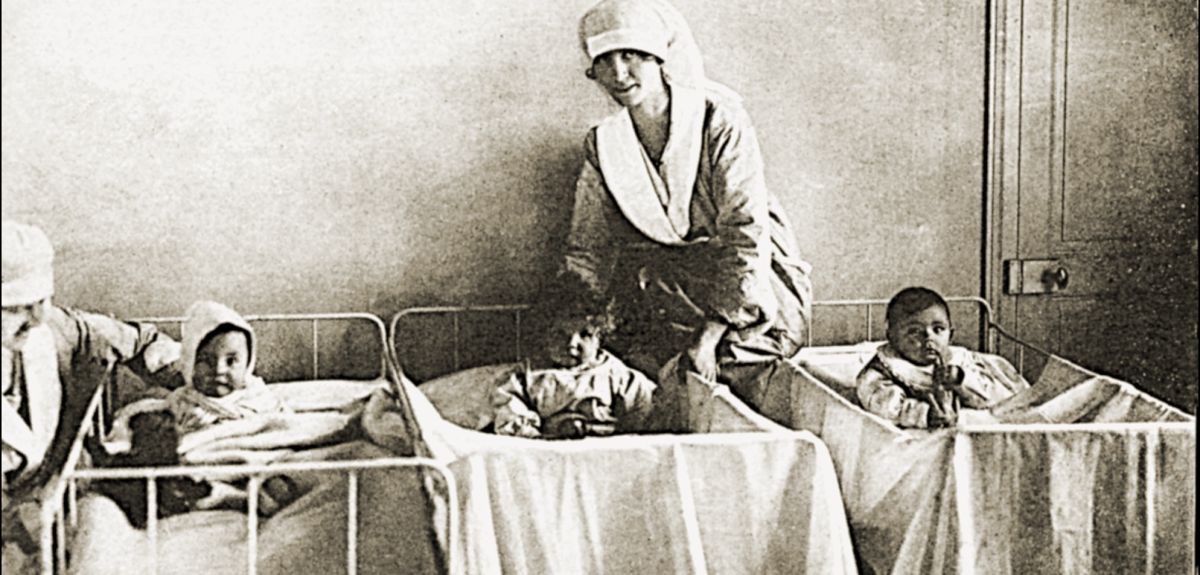
Study reveals new insights on what caused the 1920 baby boom
A new study led by Oxford University’s Leverhulme Centre for Demographic Science has found that the 1918 influenza pandemic had a much longer negative effect on fertility than previously thought. The results, published this week in the journal Population Studies, change our understanding of the social and demographic history of the 1918 pandemic.
 Hampton Gaddy. Image credit: Nuffield College and David Fisher.
Hampton Gaddy. Image credit: Nuffield College and David Fisher.However, this new study finds that the overall 1920 baby boom in six neutral European countries was caused by economic recovery following World War I instead of any psychological effects following the 1918 pandemic. Furthermore, within these six countries, the extent of the 1920 baby boom varied significantly across different regions, and was strongly linked to the impact of the 1918 pandemic.
Interestingly, the regions that had a baby boom in 1920 were not the ones whose fertility needed to recover. Parts of Denmark, the Netherlands, Norway, Spain, and Switzerland whose fertility was initially affected the least by the 1918 pandemic experienced a baby boom in 1920, caused by the end of World War I.
Meanwhile, in the communities whose fertility was hit hardest by the pandemic, couples were unable to share in the pro-fertility effects of the end of the war. This caused a large baby bust in 1919, with no baby boom in 1920. This is also clear when looking at birth cohorts. The 1919 baby bust was concentrated among women in their 30s and 40s, while the 1920 baby boom was concentrated among women in their 20s. If the baby boom served as recuperation for the bust, the two anomalies would have affected the same groups of mothers, but this was not the case. In Denmark, Norway, and Sweden, for instance, older mothers had the biggest baby bust in 1919 but did not have a baby boom in 1920.
Lead author Hampton Gaddy from Leverhulme Centre for Demographic Science, and MPhil student at Oxford University’s Department of Sociology, said: ‘It is not clear whether the communities who were hit hard by the pandemic had low fertility two years later because of lingering grief, lingering care responsibilities, or lingering economic effects—but each of those factors likely played a role.’
The researchers discovered this by combining local level data on fertility and marriages across the six neutral European countries with global data on birth rates. This showed that the post-pandemic fertility situation in neutral Europe was more complex than previously appreciated and that focusing on neutral Europe has impacted researchers’ expectations about the global effects of the 1918 pandemic. In South Asia and Latin America, for example, it is much clearer that the pandemic stifled fertility rather than boosted it.
Our work makes it clear that when the social environment is conducive to a baby boom, like at the end of a war, not all communities can partake in that equally. The year 1918 gave Europe both the end of a brutal war and the main wave of a deadly pandemic. When fertility recovered after the war’s end, the communities hit hard by the pandemic were unable to share in that demographic recovery.
Hampton Gaddy, Leverhulme Centre for Demographic Science, University of Oxford.
The researchers also used data on the prices of household goods across Spain at the time. This provided further evidence that the end of the war was the cause of the 1920 baby boom in neutral Europe, rather than the end of the pandemic. This data showed that birth rates in 1920 were jointly responsive to both the initial effect of the pandemic on fertility and the rate of inflation in 1919.
These findings challenge the idea that pandemics and other mortality crises will necessarily be followed by baby booms that regenerate the population.
Hampton Gaddy added: ‘This research reminds us that crises do not tend to have demographic silver linings. Many people have assumed that the pandemic had relatively little effect on the people who lived through it, given that they lived in a time of high disease burden. Indeed, we often speak of the 1918 pandemic as “forgotten” until recently. However, our findings suggest that the pandemic had a big enough effect to cause many couples to forego having children for at least two years.’
He added: ‘Looking to the present day, the global understanding of Covid-19’s effect on birth rates is still emerging. This work raises the possibility that even if there was a baby boom in 2021 or 2022 in some communities, the 2020 pandemic may not have been the cause of that high fertility.’
The study ‘Did the 1918 influenza pandemic cause a 1920 baby boom? Demographic evidence from neutral Europe’ has been published in Population Studies.
 Expert Comment: Why cherish the analogue in a digital age?
Expert Comment: Why cherish the analogue in a digital age?
 New Year Honours 2026
New Year Honours 2026
 New study estimates NHS England spends 3% of its primary and secondary care budget on the health impacts of temperature
New study estimates NHS England spends 3% of its primary and secondary care budget on the health impacts of temperature
 International collaboration launches largest-ever therapeutics trial for patients hospitalised with dengue
International collaboration launches largest-ever therapeutics trial for patients hospitalised with dengue